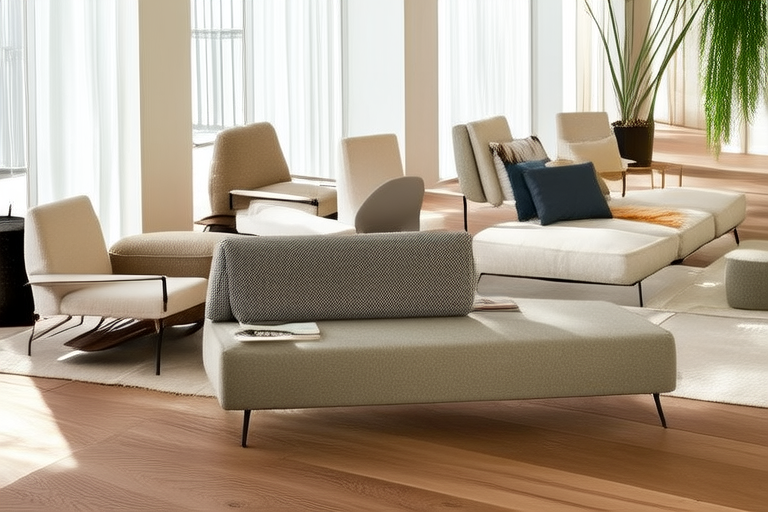Exploring Eco-Friendly Options: Sustainable Fabrics for High-Quality Upholstery Projects
Introduction
In today’s world, sustainability is no longer just a buzzword; it’s a necessity. As consumers become more conscious of their environmental impact, the demand for eco-friendly products has surged. One area where sustainable practices can make a significant difference is in upholstery. Whether you’re a professional upholsterer or a DIY enthusiast, choosing the right fabric is crucial not only for the aesthetics but also for the environmental footprint of your project. This article delves into the world of sustainable fabrics, offering insights and practical advice on how to select and use them for high-quality upholstery projects.
Understanding Sustainable Fabrics
What Makes a Fabric Sustainable?
Sustainability in textiles goes beyond just the material itself. It encompasses the entire lifecycle of the fabric, from raw material sourcing to manufacturing and disposal. Eco-friendly fabrics are typically made from renewable resources, produced using minimal energy and water, and involve fewer harmful chemicals. Some common sustainable materials include organic cotton, linen, hemp, and recycled polyester. Each of these materials has unique properties that make them suitable for different types of upholstery projects.
- Organic Cotton: Grown without synthetic pesticides and fertilizers, organic cotton is a popular choice for its softness and breathability.
- Linen: Derived from the flax plant, linen is durable, biodegradable, and requires less water than cotton to grow.
- Hemp: Known for its strength and versatility, hemp is one of the most sustainable crops due to its low water usage and ability to thrive without pesticides.
- Recycled Polyester: Made from post-consumer plastic bottles, recycled polyester reduces waste while providing a strong and versatile fabric option.
The Environmental Impact of Traditional Fabrics
Traditional upholstery fabrics often come with a hefty environmental cost. Many synthetic materials, like polyester and nylon, are derived from non-renewable fossil fuels and require extensive processing, leading to high carbon emissions. Additionally, the dyes and finishes used in conventional fabrics can contain harmful chemicals that pollute waterways and contribute to air pollution. By opting for sustainable alternatives, you can significantly reduce the environmental impact of your upholstery projects.
Selecting the Right Sustainable Fabric
Factors to Consider When Choosing a Fabric
When selecting sustainable fabrics for your upholstery project, there are several factors to consider:
- Durability: Choose fabrics that can withstand frequent use and cleaning. Materials like linen and hemp are known for their longevity.
- Aesthetic Appeal: The fabric should complement the design of your furniture. Organic cotton and recycled polyester offer a wide range of colors and textures.
- Maintenance: Some fabrics require more maintenance than others. For example, while linen is easy to clean, it may not be as stain-resistant as other options.
- Certifications: Look for certifications such as GOTS (Global Organic Textile Standard) or OEKO-TEX, which ensure that the fabric meets strict environmental and safety standards.
Practical Tips for Fabric Selection
- Research the Manufacturer: Not all sustainable fabrics are created equal. Research the manufacturer to understand their production processes and commitment to sustainability.
- Sample Before Purchasing: Always request samples before making a bulk purchase. This allows you to assess the texture, color, and quality of the fabric firsthand.
- Consider the Source: Opt for fabrics sourced from local suppliers to reduce transportation-related emissions.
Implementing Sustainable Fabrics in Your Projects
Step-by-Step Guide to Upholstery with Sustainable Fabrics
- Measure and Cut: Accurately measure your furniture pieces to determine the amount of fabric needed. Allow extra for cutting and fitting.
- Prepare the Frame: Ensure the frame is sturdy and free of any loose parts. Sand and fill any gaps if necessary.
- Attach Webbing or Batting: Use webbing or batting to provide support and cushioning. This step is crucial for ensuring comfort and durability.
- Cut and Attach the Fabric: Carefully cut the fabric according to your measurements and attach it to the frame using staples or tacks. Make sure to stretch the fabric evenly for a smooth finish.
- Finishing Touches: Add any additional details such as piping or trim to enhance the aesthetic appeal of your project.
Case Study: A Successful Upholstery Project
One of our readers recently transformed an old armchair using organic cotton fabric. She first measured the chair carefully and then purchased the fabric from a local supplier who provided detailed information about the production process. After preparing the frame and attaching webbing, she cut and attached the fabric, ensuring a snug fit. The result was a beautifully restored piece of furniture that not only looked great but also had a reduced environmental impact.
Conclusion
Incorporating sustainable fabrics into your upholstery projects is a rewarding way to reduce your environmental footprint while creating beautiful, long-lasting pieces. By understanding the properties of different sustainable materials and following practical tips for selection and implementation, you can confidently choose the best fabric for your needs. Whether you’re a seasoned upholsterer or a beginner, embracing eco-friendly options is a step towards a more sustainable future.
Actionable Advice
- Start small by incorporating sustainable fabrics into smaller projects, like cushions or pillows.
- Stay informed about new developments in sustainable textile technology.
- Share your experiences and learn from others in the upholstery community.
By taking these steps, you’ll not only enhance your skills but also contribute positively to the environment. Happy crafting!
